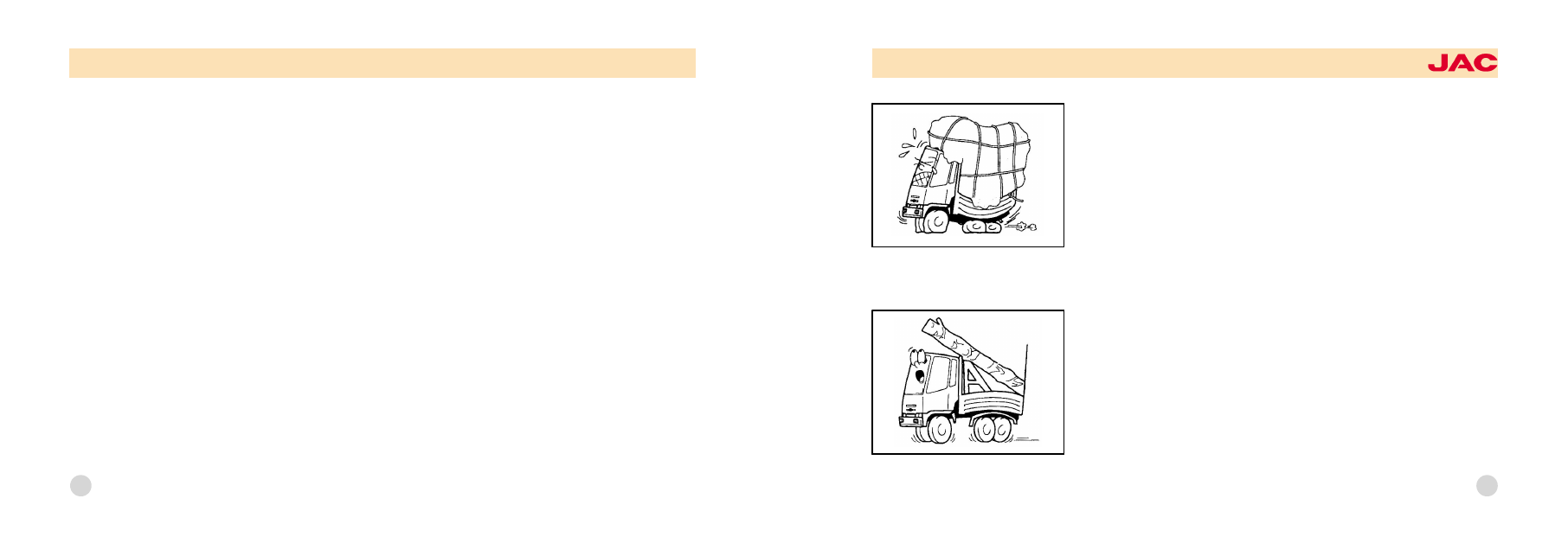Content .. 1215 1216 1217 1218 ..
Isuzu N-Series. Service manual - part 1217

If the emergency brakes are automatically applied due to a defective brake
line, the compressed air pressure does not rise so cannot be pulled. Release
the brakes in the following sequence:
Pull the knob of the cab control valve.
Since the standby tank is used for emergency brake release, remember that
the emergency brake release can be made only about twice.
荫
When the air in the standby tank has been fully consumed, the tire inflation
pressure may be employed. For this purpose, however, special tools are re鄄
quired. Ask your nearest service shop.
110
OWNER爷S MANUAL
JAC HEAVY DUTY TRUCK
BE SURE TO CHECK THE FOLLOWING WHEN LOADING
Do not load cargo on one side only. Make sure that cargo is evenly distribut鄄
ed.
When long cargos are to be loaded, use rigid frames to minimize their protru鄄
sion from the rear end of the body.
NOTE:
Be careful about the height of loading.
111